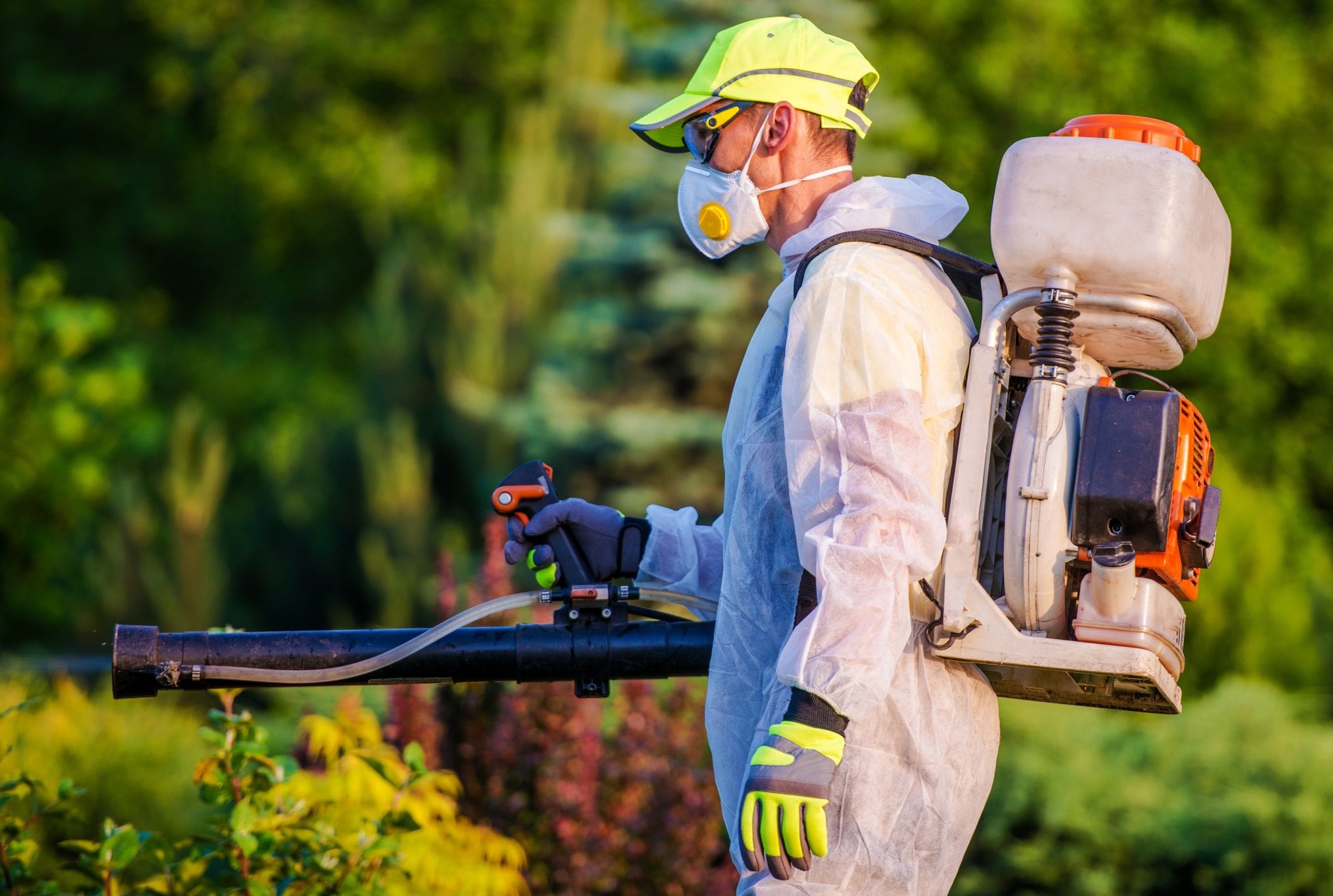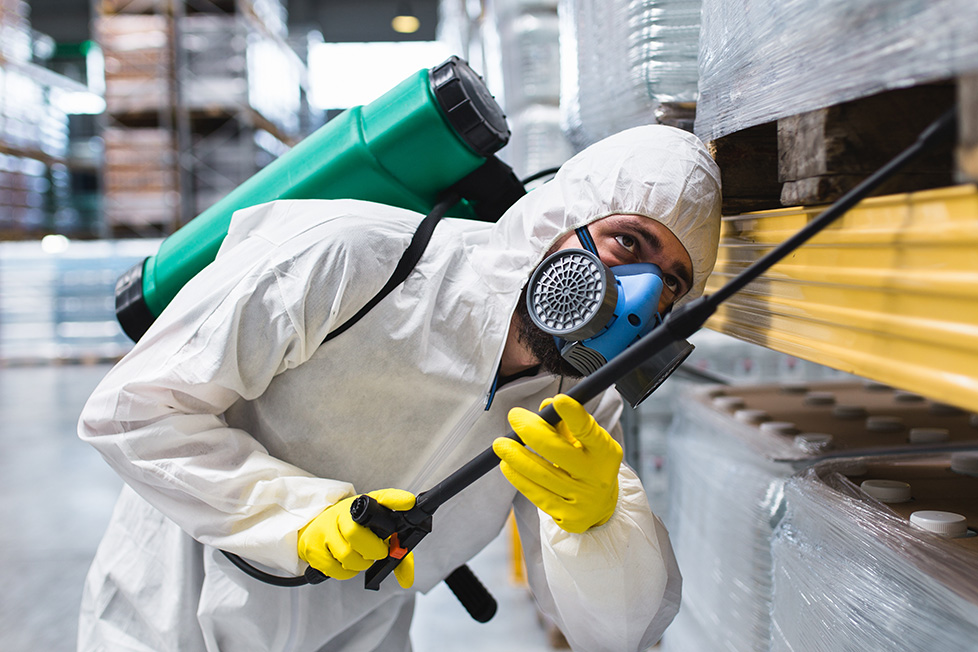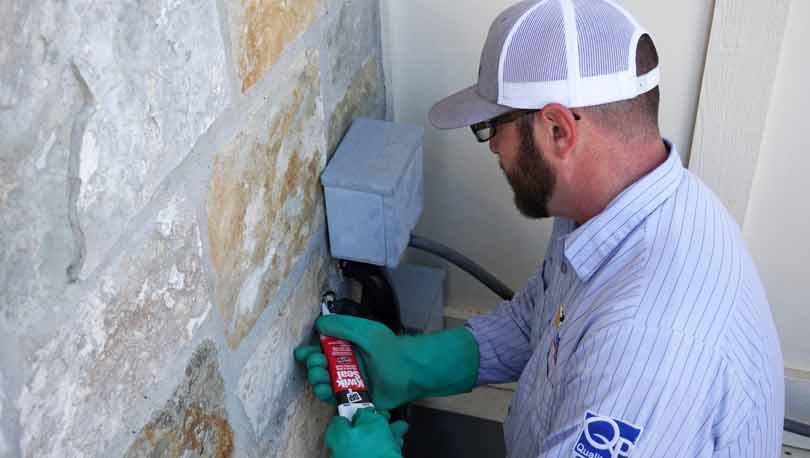Rest Easy with Orem Pest Control: Reliable Protection Versus Pest Intrusions
Rest Easy with Orem Pest Control: Reliable Protection Versus Pest Intrusions
Blog Article
An Understanding Into Different Sorts Of Parasite Control Solutions Available on the market
In the world of pest control services, a diverse selection of methods exists to deal with the relentless challenge of handling undesirable burglars. As pests continue to advance and adapt, the requirement for sustainable and effective insect control procedures comes to be significantly paramount. Orem Pest Control.
Chemical Sprays
Chemical sprays are typically used in parasite control solutions to effectively eliminate and avoid invasions. These sprays consist of different chemicals that target certain parasites, such as bugs, termites, or rodents. The energetic components in these sprays function by interfering with the parasites' nerve systems, creating paralysis or fatality upon get in touch with.
Expert bug control services employ experienced specialists who understand the correct application of chemical sprays to make certain optimum efficiency while reducing risks to humans, pet dogs, and the environment. These technicians perform comprehensive evaluations to identify the kind of bug infestation and determine one of the most appropriate spray to deal with the problem.
Among the primary benefits of utilizing chemical sprays in bug control is their capacity to give prompt results. As soon as applied, the spray begins working swiftly, lowering the populace of insects in a prompt way. Additionally, chemical sprays can supply lasting defense against future infestations when applied consistently as part of a comprehensive bug management strategy.
Biological Control

Timeless organic control involves introducing all-natural enemies of the pest types right into the setting. These natural opponents, such as microorganisms, killers, or bloodsuckers, help regulate parasite populations by victimizing or contaminating them. This method is commonly made use of for long-term insect monitoring and developing a natural balance in the community.
On the other hand, augmentative organic control involves releasing multitudes of valuable organisms, such as aggressive bugs or nematodes, to manage existing pest populaces. This technique is more instant and can be especially valuable in agricultural settings to attend to existing insect problems.
Biological control methods are favored for their environmentally pleasant nature, very little influence on non-target varieties, and reduced chemical pesticide use, making them a lasting pest monitoring choice for numerous markets.
Baits and traps

On the other hand, baits are compounds made use of to attract insects to a certain area for control purposes. Baits can be infected or non-poisoned, with infected lures being typically utilized for bugs like rats, cockroaches, and ants. Non-poisoned baits are typically made use of together with traps to tempt insects into the catch for capture. Proper positioning and selection of traps and lures are important for their performance, making them important devices in integrated insect monitoring methods. By comprehending the actions of the target pest, pest control professionals can effectively utilize lures and catches to take care of parasite problems successfully - Orem Pest Control.
Integrated Pest Administration
Integrated Bug Administration (IPM) is a detailed technique that integrates different insect control methods to efficiently manage and remove parasites while decreasing environmental impact. IPM focuses on long-term prevention strategies by taking into consideration the biology and habits of pests, along with the certain environment in which they exist. This approach integrates a selection of bug control tactics such as organic control, habitat adjustment, adjustment of cultural techniques, and image source using immune crop ranges.
Among the essential concepts of IPM is to prioritize non-chemical parasite control methods whenever feasible. This may consist of using natural killers to control pest populaces or executing physical obstacles to stop problems. Chemical pesticides are utilized as a last option and are applied carefully to minimize damage to non-target check my source microorganisms and the surrounding community.
Warmth Treatment
As a complementary approach to Integrated Pest Administration approaches, heat therapy is a targeted strategy that utilizes the power of heats to eradicate insects properly and efficiently. This technique is especially useful in getting rid of bed pests, termites, and various other pests that may be concealing in hard-to-reach areas within a structure. By increasing the ambient temperature level to levels that are deadly to the parasites but risk-free for the structure, warm treatment can penetrate fractures, gaps, and furnishings where traditional pesticides may not get to.
One of the key benefits of warm treatment is that it is chemical-free, making it a eco pleasant and risk-free option for parasite control. In addition, warm treatment is known for its capacity to give fast results, typically fixing bug invasions in a single therapy session.
Final Thought

 Having actually resolved the efficacy of chemical sprays in bug control solutions, the emphasis currently shifts to biological control methods as a sustainable choice for taking care of pest problems. Catches and baits are crucial devices in insect control solutions, using targeted solutions i loved this for details bugs. By understanding the actions of the target insect, pest control specialists can efficiently make use of traps and lures to handle parasite invasions efficiently.
Having actually resolved the efficacy of chemical sprays in bug control solutions, the emphasis currently shifts to biological control methods as a sustainable choice for taking care of pest problems. Catches and baits are crucial devices in insect control solutions, using targeted solutions i loved this for details bugs. By understanding the actions of the target insect, pest control specialists can efficiently make use of traps and lures to handle parasite invasions efficiently.Integrated Parasite Administration (IPM) is a comprehensive technique that combines numerous insect control methods to effectively take care of and eliminate bugs while minimizing ecological influence.In final thought, numerous types of bug control services are offered in the market to resolve different bug problems.
Report this page